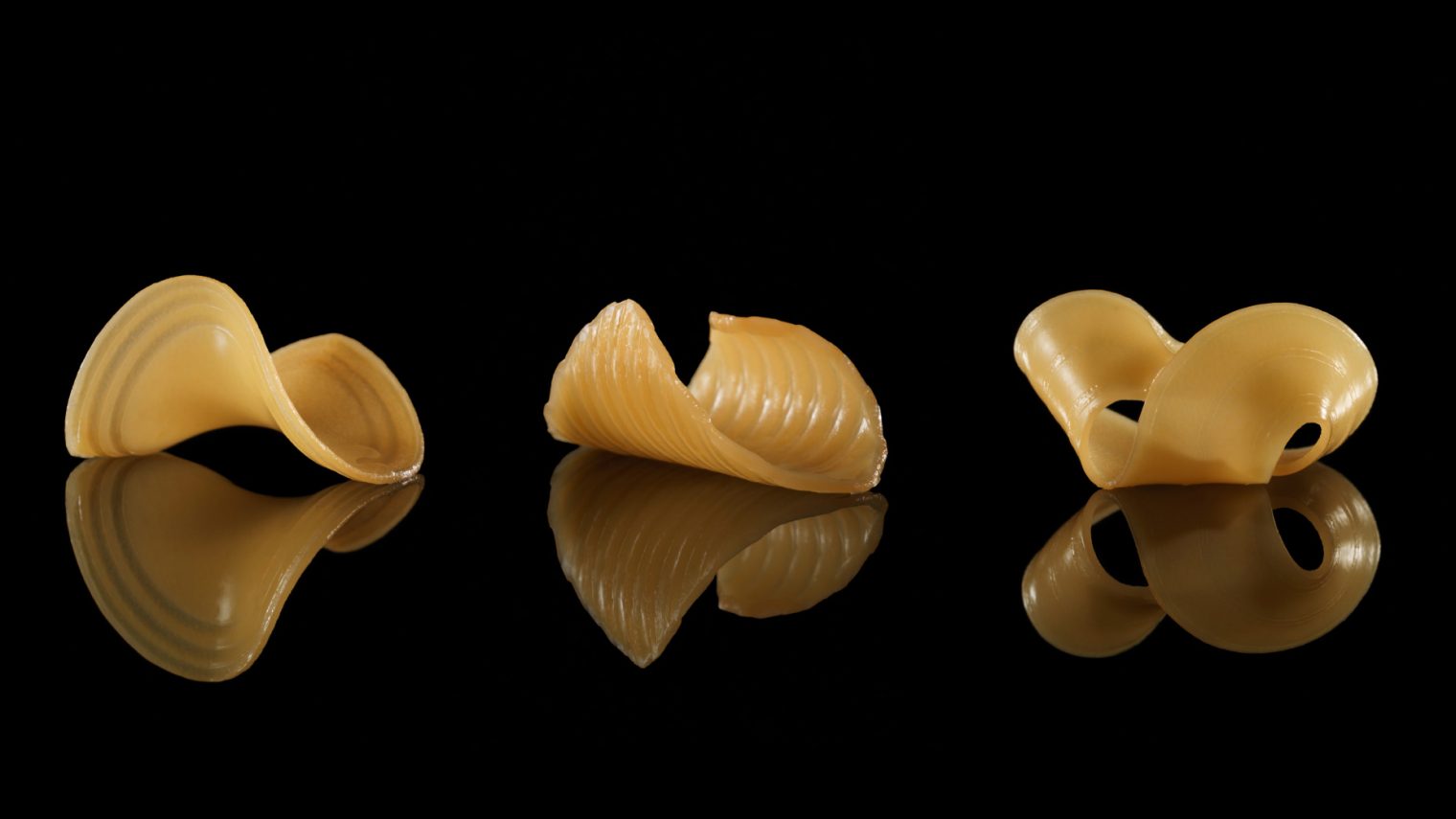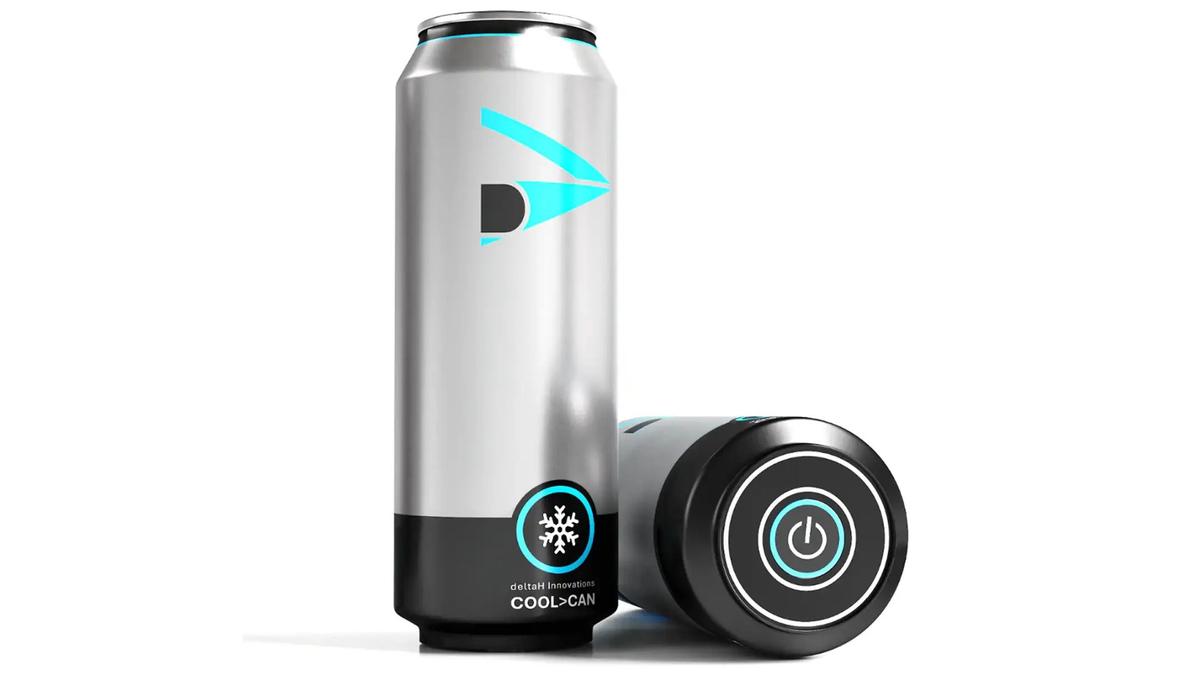MIT Just Invented Flat Pasta That Changes Its Shape In Water

Photo by Michael Indresano Production, courtesy of MIT Media Lab.
The pieces of pasta pictured above were flat just minutes before these photos were taken. The instance they came into contact with water, they began absorbing it and transforming into the shapes you’re looking at now. Sounds pretty crazy, right?
This shape-changing pasta was conceived by the Massachusetts Institute of Technology (MIT) Media Lab as a new innovation to help reduce packaging and shipping costs for pasta products. Currently, up to 67% of the volume of a pasta package is air due to the clunky sizes and shapes of several pasta types, such as macaroni. Through the research led by MIT researchers Dr. Wen Wang and Dr. Lining Yao, pasta can now be packed much more compactly to save packaging material and space when shipping and distributing items.
The flat pasta packages would be extremely helpful in allowing companies to increasing the amount of product distributed at a time, but are also useful when there is a necessity to travel light and carry food, such as on backpacking trips or as military rations.
At the 2017 FoodInno Symposium at Stanford, California, Dr. Lining Yao explained that the pasta actually consists of layers of gelatin and cellulose. The gelatin absorbs water that allows the pasta to swell, while 3D-printed cellulose acts as a barrier to control that water absorption to create all different kinds of shapes.
The pasta has already been tested in a high-end restaurant with successful results, and Yao envisions that one day, companies will be able to utilize online software to provide design instructions for different pasta shapes that can be delivered to stores or to your own home.
If the above video is any indication, MIT’s new pasta will definitely make for some exciting new Instagram and YouTube content as well, in addition to the benefits in product packaging and distribution.






















